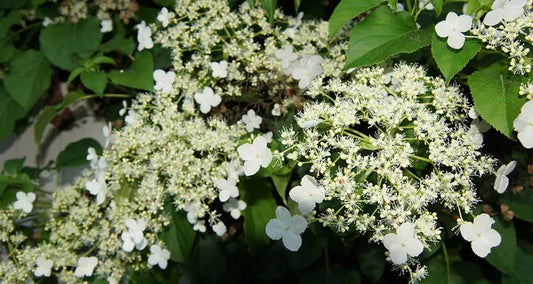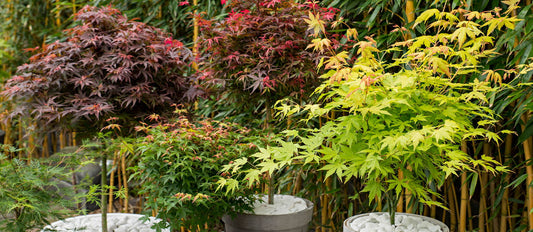The Japanese maple (Acer palmatum) is the smaller version of maple (Acer). Its small size makes it a popular plant for the garden. It even fits in a nice pot in the garden or on the patio. The colourful tree is also very hardy and requires very little attention.
The Japanese maple grows slowly, so pruning is a doddle. But it is a tree with a strong sap flow between February and June; the sap flow is the transport of nutrition and water from the roots to the top of the tree. This means that it can 'bleed' to death if you prune it incorrectly. Don't worry, this blog sets out exactly how and when you should prune the Japanese maple. Once you've read this blog your Japanese maple pruning skills will soon be first class.
Pruning the Japanese maple in the summer: shaping the plant
Pruning the Japanese maple is not always necessary because the tree grows so slowly. But if the Japanese maple is in a small garden or in a pot it may well be necessary. For instance, when branches die off or if you want to change its shape. 'Shaping' the plant as we call it. The best time to prune the plant is at the end of June or start of July, when the flow of sap tails off again.
Cut the branches back a bit. How much you cut depends on the size of the plant and what you want to achieve. Reassess your progress regularly, and don't prune away more than 20 percent of the plant. Always keep the natural shape in mind; you want to spread the branches that you're cutting back evenly over the plant. Start at the end of each branch and look at how many twigs it has. Always cut the branch back to just above a new twig, as this will take on the job of the old one. Make sure that you don't create any big holes in the plant and never simply cut bare wood away. This will create shoots that are difficult to keep under control. Finally, you can also cut away deadwood in the summer, but always make sure that you cut back to living wood.
What to do when there are a lot of dead branches?
The Japanese maple can sometimes suffer from dieback, often caused because the soil contains too little or the wrong nutrition. The Japanese maple is an acid-loving plant, so it prefers an acidic soil. So, you may want to add some turf when you plant it. Turf makes the ground more acidic. Which is exactly what the Japanese maple is looking for. Want to find out more about the acidity (pH level) of soil? Let us explain!
Pruning the Japanese maple in the spring: the big prune
If you want to keep control of your Japanese maple, we recommend that you remove its lowest branches, ideally between October and December. The best way to deal with larger thick branches is to saw them off but don't remove them right up to the tree trunk; this will protect the branch collar and be better for the tree. We recommend sawing thick branches off in stages, to prevent additional damage to the tree if the last section of branch tears off during sewing. Always start with a vigorous cut on the underside of the branch. Cut very thick branches about 10 cm from the trunk For thinner branches you can stick to about 5 cm. Once you've sawn the branch off, you will be left with a stump, which you should remove as well. Remember to stay far enough away from the trunk, so you don't damage the branch collar.
We deliver it to your home without any hassle. Fresh from the nursery and sustainably packaged with the greatest of care.




